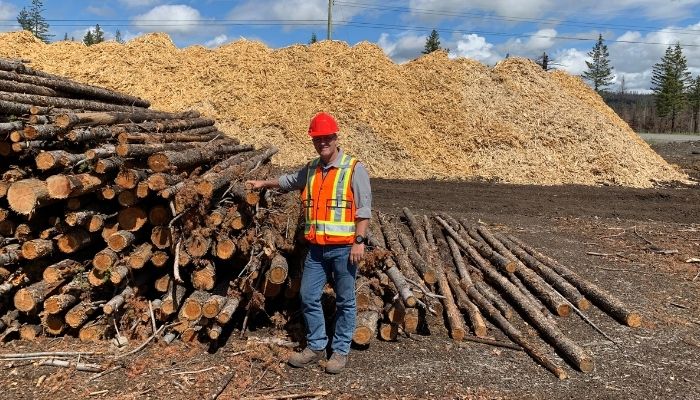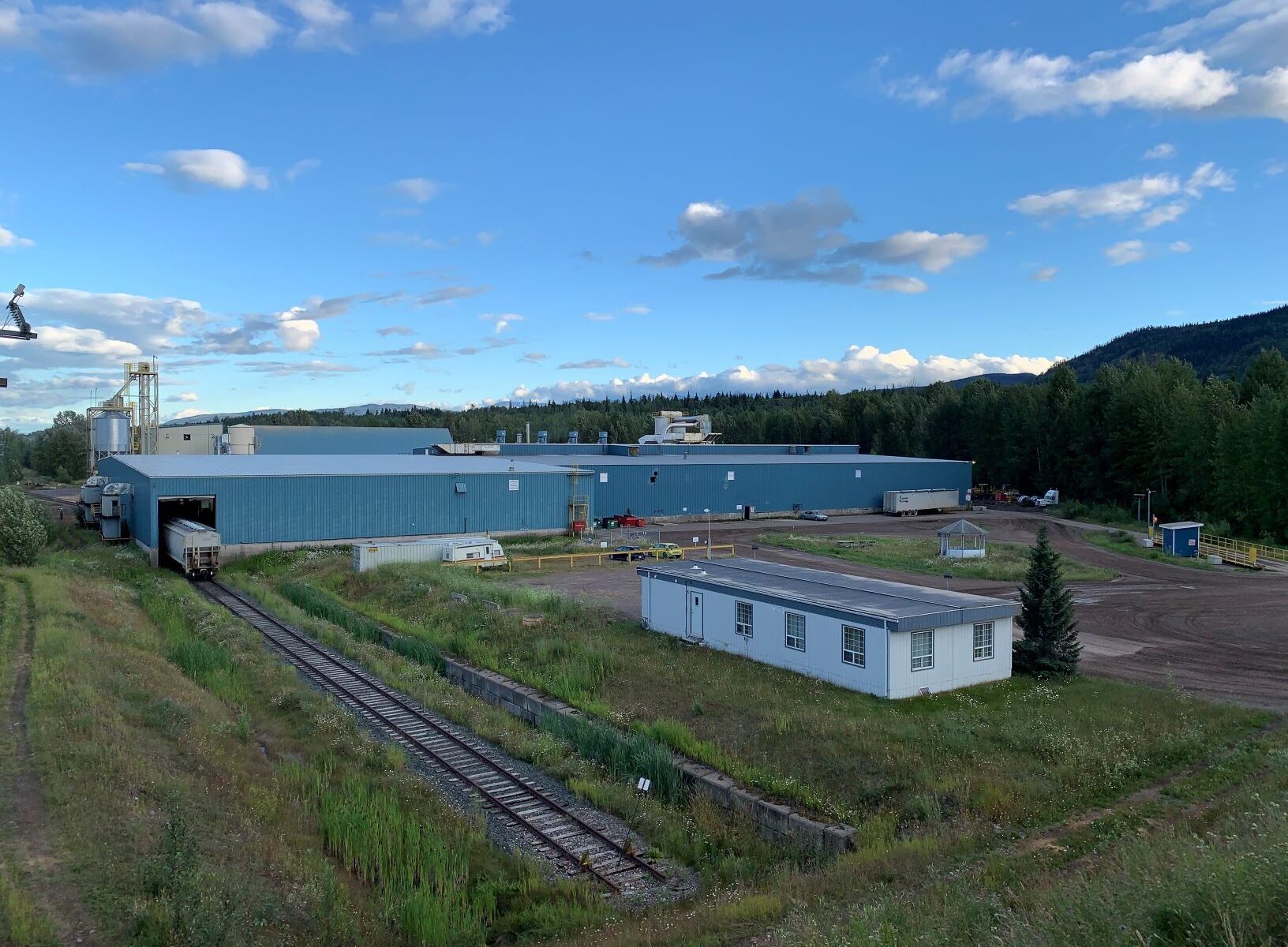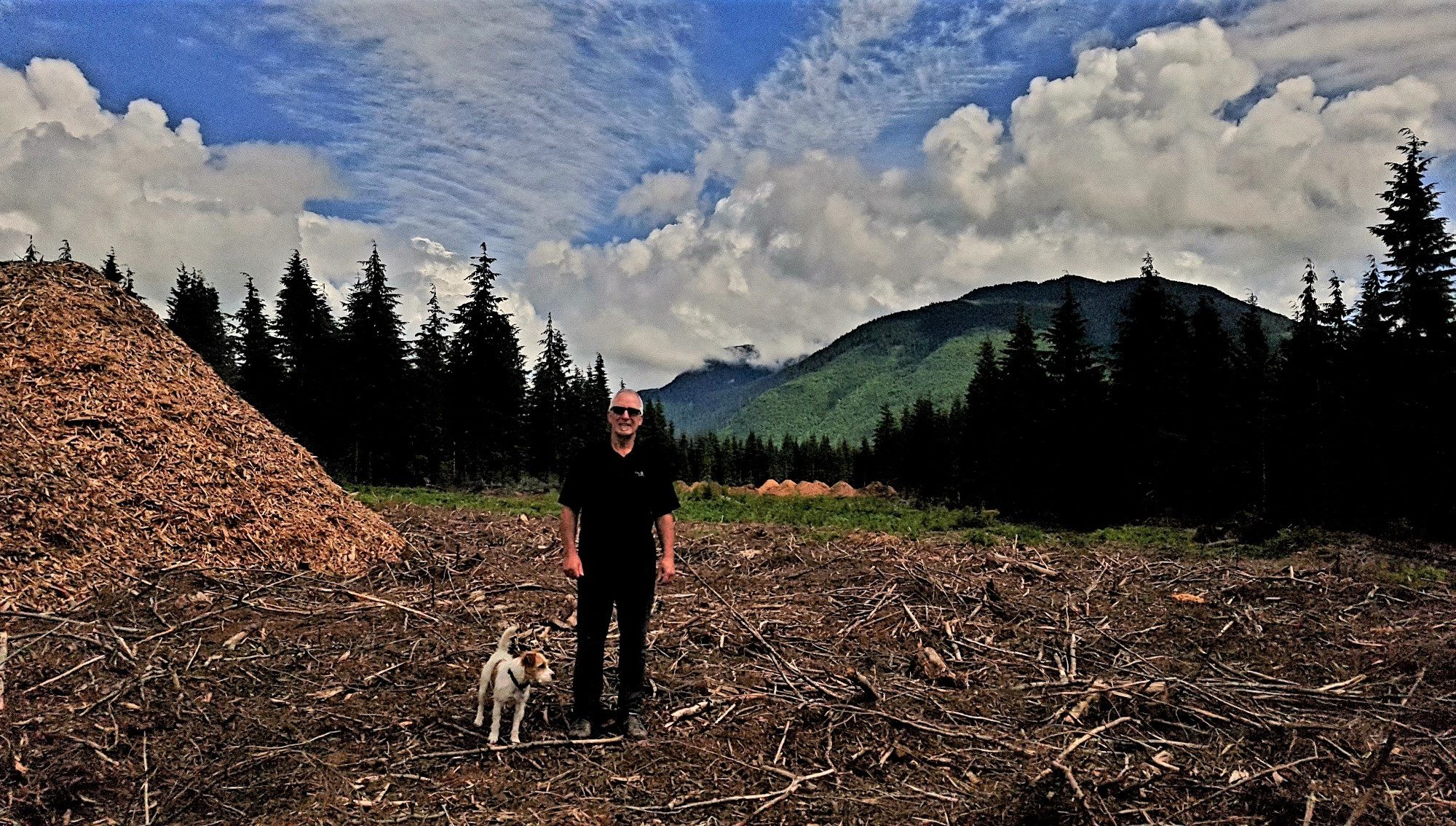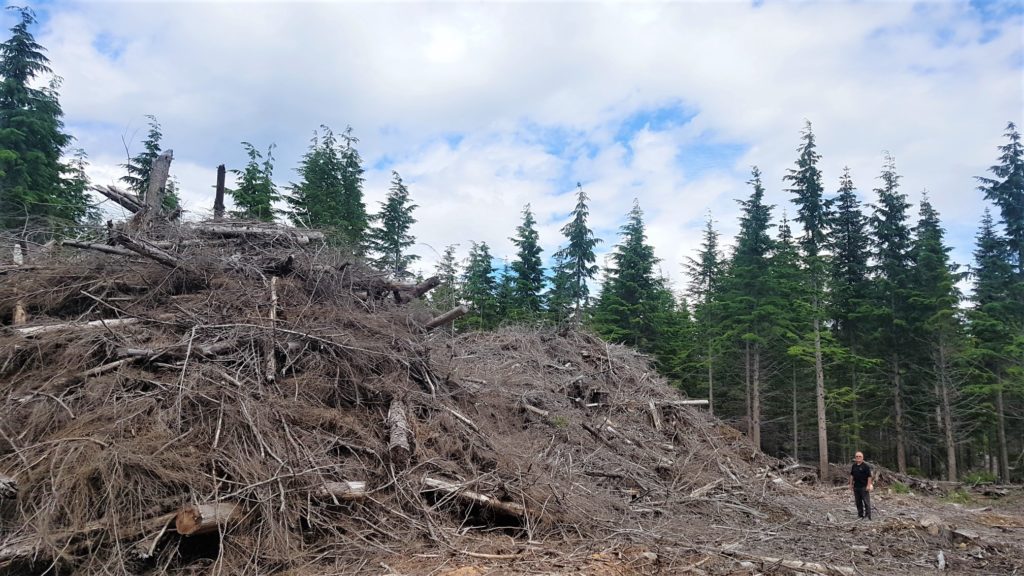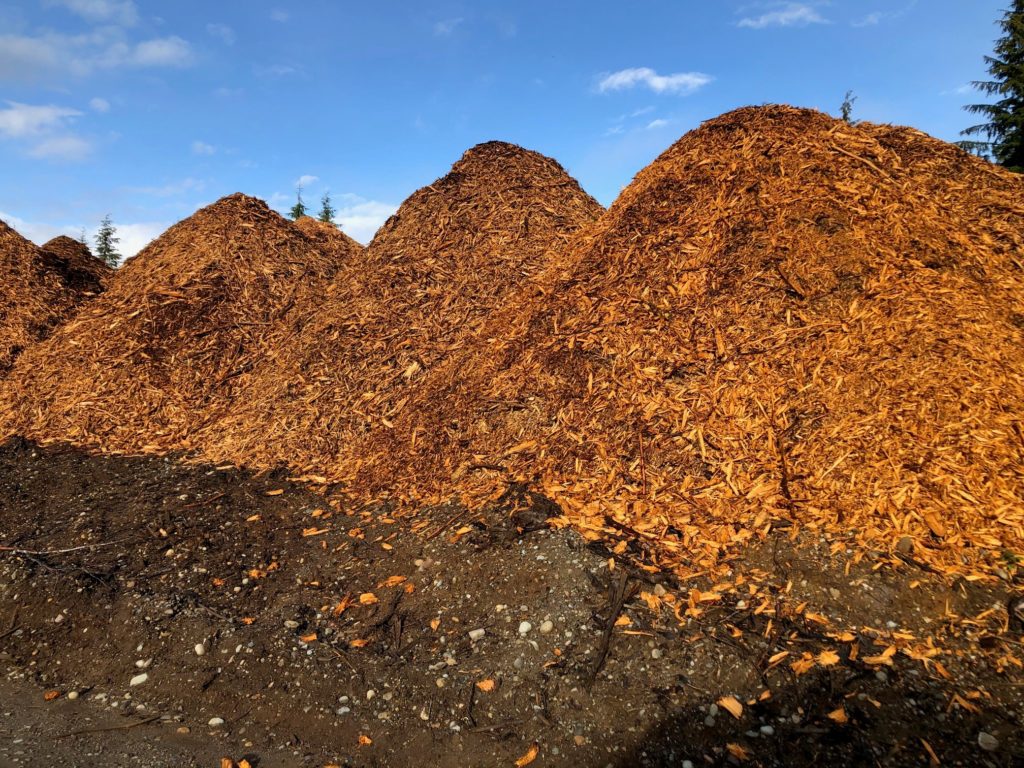Grants of $3.9 million provided to Pinnacle Renewable Energy by the Forest Enhancement Society of BC (FESBC) are helping support jobs throughout the Interior and recover about 300,000 cubic metres of wood waste that otherwise would have been burned in slash piles.
A $500,000 allocation from those grants made it economical for Lavington Pellet Limited Partnership to recover 38,000 cubic metres of residual wood fibre (also known as “bio-logs”) from harvesting areas in the Monashee Mountains. The area’s steep terrain makes it difficult for wood grinders and traditional chip trucks to reach harvesting sites after logging is finished. However, with this funding, the uneconomic waste wood fibre could be hauled out at minimal additional cost by logging contractors already working in the area.
Lavington Pellet Limited Partnership in the Okanagan Valley is a joint venture between Pinnacle Renewable Energy and Tolko Industries Ltd. The project began in the winter of 2019-20 and is expected to last until March 2022.
“These companies are working together to support local jobs and produce a marketable wood product from residual fibre, while also reducing carbon emissions,” said Doug Donaldson, Minister of Forests, Lands, Natural Resource Operations and Rural Development.
“The crucial financial support provided by the Forest Enhancement Society of BC made this innovative project possible.”
Doug Donaldson, Minister of Forests, Lands, Natural Resource Operations and Rural Development
The collaboration between FESBC and local forestry companies not only helps improve air quality by burning less wood waste, but also supports good-quality jobs for British Columbians in their communities. The strategy has resulted in a consistent supply of wood fibre for Lavington Pellet Limited Partnership.
“This funding allowed us to reduce carbon emissions through the utilization of harvest waste,” said Jason Fisher, vice-president fibre, Pinnacle Renewable Energy. “Harvest residuals are more costly to handle, process and transport than mill residuals, especially in areas with challenging geography like the regions around Lavington. FESBC’s support for this project turned into local benefits and helps us turn B.C. wood waste into a global carbon solution.”
The residual waste recovered by Lavington Pellet Limited Partnership was stored in Lumby and processed in the spring, when mill curtailments and road use bans were in effect. Having the additional waste fibre available for processing reduced layoffs for 35 direct employees and 80 truck drivers.
“It’s a win-win project that supports the environment, local industries and the economy by providing employment opportunities for local contractors,” said Dave Conly, operations manager, FESBC.
To learn more, visit the FESBC project pages or the BC Government website: news.gov.bc.ca
Contacts:
Aleece Laird
Communications Liaison
Forest Enhancement Society of BC
communications@fesbc.ca
250 574-0221
Ministry of Forests, Lands, Natural Resource
Operations and Rural Development
Media Relations
250 213-8172
Connect with the Province of B.C. at: news.gov.bc.ca/connect

